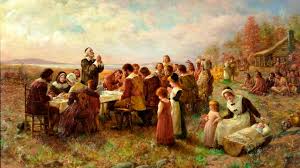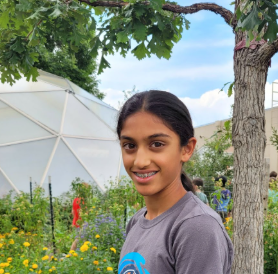The story of the First Thanksgiving involved European settlers, or pilgrims, inviting indigenous people to a grand feast. Though it is a great reason to come together and celebrate, it leaves out Native perspectives and ignores the mistreatment and injustice that the pilgrims inflicted on the native people.
The First Thanksgiving
In 1620, European pilgrims arrived at Plymouth, in what is today Massachusetts. This region was also inhabited by the native Wampanoag people. When the settlers arrived, the indigenous people welcomed them and treated them to native foods, teaching them how to harvest, hunt, and farm for their own food. During the fall time of 1621, 52 pilgrims held a feast to celebrate a successful harvest, and 90 Wampanoag people joined, bringing food to the gathering.
After this peaceful celebration, the pilgrims began to treat the native Wampanoag with injustice and cruelty. War soon ensued, and settlers forcefully claimed mass amounts of native land, lives, and independence. Though thanksgiving is celebrated today with feasting and festivity, it is a painful reminder to Native Americans of the people who wasted their land away from them to colonize it.
Thanksgiving Becomes a National Holiday
In the heat of the civil war, the United States was divided and in chaos. A woman named Sara Josepha Hale wanted to find a way to unite Americans and restore peace within the nation. Hale was an educated and well-off citizen who owned a nationally referenced news platform called Godey’s Lady’s book. She had a vision of a country where everyone, no matter their race or culture, was accepted and treated equally, and everyone in the country was united.
Hale wanted to make a holiday that gave people a reason to come together and celebrate. Thanksgiving was celebrated in many Northern households, and Hale strove to make it into a national holiday. She persuaded citizens to join her cause with sections in her magazine, and she wrote handwritten letters to government officials to get them on board with her idea. In 1863, she messaged President Lincoln, urging him to make Thanksgiving a national holiday. Lincoln agreed to do this five days after reading the letter.
Unfortunately, Hale’s goal of bringing together the nation in the heat of war was not fulfilled, but she did bring into existence an important American holiday that is enjoyed to this day. Thanksgiving is a time to share and have fun, to put aside our differences and celebrate!
Cites –
https://www.npr.org
https://compassclassroom.com
https://visit.archives.gov














